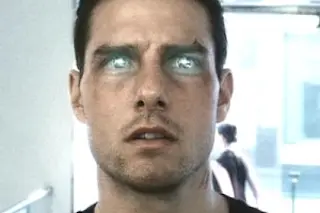Eye-scanning technology, voice-print security, palm prints: Biometric security has almost become one of the basic signifers of existing in the future, like clean white walls and rounded surfaces. In Minority Report the biometrics extended to the point that Tom Cruise's character, John Anderton, was easily identified by animated advertisements as he walked through a mall, and later on he had to actually replace his own eyeballs so he could avoid detection. Ickiness aside, biometrics have become less futuristic and more now-istic. The entire town of León, in central Mexico, contracted with Global Rainmakers, Inc., to install iris scanning technology throughout the town. Locals will be able to use iris scanning to get on the bus, use ATMs, and get hospital care. But the people of Leon might want to consider a report (free with registration) from the National Research Council before they go too far down that road, because there ...
The Fundamental Problems of Minority Report-style Biometrics
Explore how biometric security technology transforms daily life while raising privacy concerns and issues with false positives.
More on Discover
Stay Curious
SubscribeTo The Magazine
Save up to 40% off the cover price when you subscribe to Discover magazine.
Subscribe













